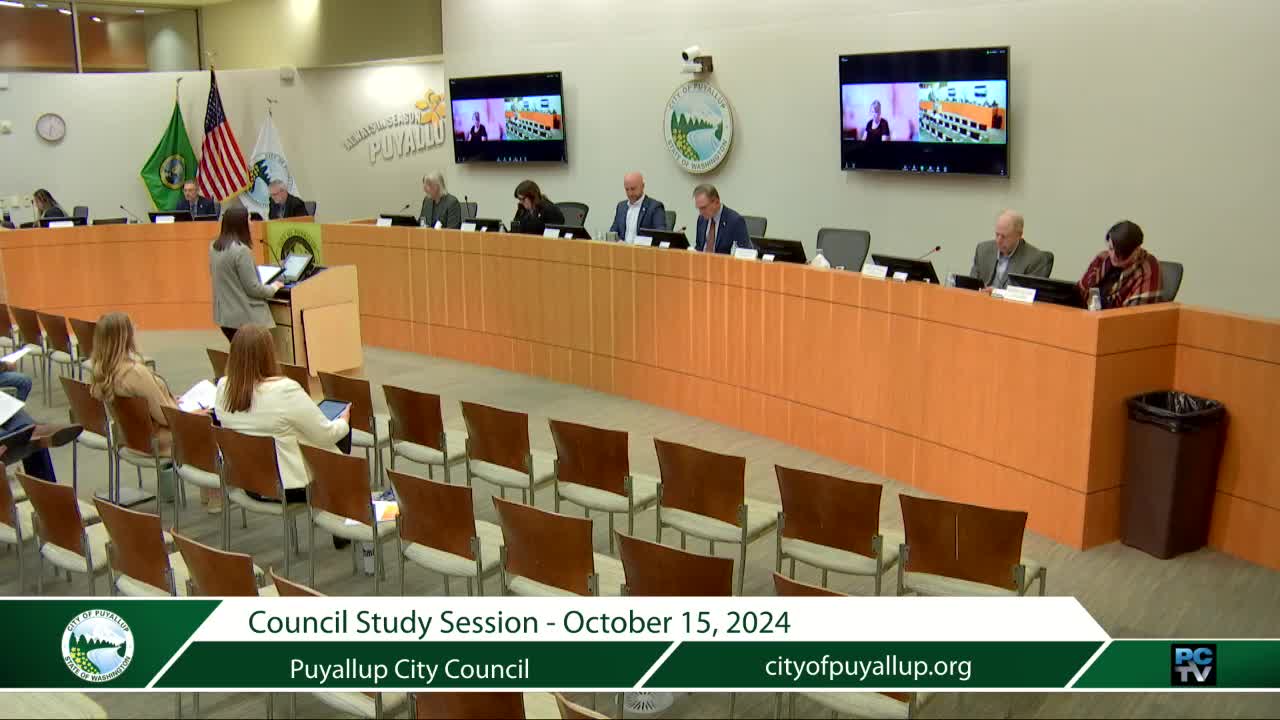City outlines ambitious transportation plan for future growth
October 15, 2024 | Puyallup, Pierce County, Washington
This article was created by AI summarizing key points discussed. AI makes mistakes, so for full details and context, please refer to the video of the full meeting. Please report any errors so we can fix them. Report an error »

In a recent government meeting, officials discussed significant updates to the transportation plan as part of the comprehensive plan for the city. Daniel Dye, along with Planning Manager Katie Baker, presented key elements including the draft environmental impact statement (EIS) and the future land use map.
Dye highlighted the feedback received from various agencies, including the Washington State Department of Transportation (WSDOT), which emphasized the need for a thorough analysis of impacts on state highways. The city has already conducted an intersection level of service analysis for critical intersections on Meridian and SR 161, and plans to incorporate these findings into the final EIS.
Pierce Transit also provided input regarding Route 402, which is set to become a high-capacity transit corridor. The city is working to enhance transit speed and reliability between major transit hubs, which will be reflected in the updated EIS.
The meeting also covered proposed changes to the level of service (LOS) standards for vehicular traffic, maintaining the current standard of LOS D in most areas, while addressing specific corridors that may require a higher standard due to congestion issues. Notably, intersections near the BNSF rail line face significant blockages, impacting traffic flow.
Dye introduced a new concept of pedestrian level of traffic stress (LTS), categorizing facilities from LTS 1 (safe and comfortable) to LTS 4 (uncomfortable and unsafe). The city aims to construct pedestrian and bicycle facilities that meet at least LTS 2 standards when feasible.
The draft transportation project list was a focal point of the discussion, with Dye explaining the process of compiling and prioritizing projects based on community needs and available funding. The city is working towards a fiscally constrained project list for the next 20 years, which will include active transportation improvements, corridor projects, intersection enhancements, and maintenance efforts.
Council members were encouraged to review the project list and provide feedback, ensuring that the proposed projects align with the priorities of their respective districts. The comprehensive plan is set to be updated every decade, but staff will continuously assess project viability based on changing growth patterns and travel behaviors.
Katie Baker will follow up with additional information on the draft future land use map and middle housing options, seeking further policy direction from the council. The meeting underscored the city's commitment to enhancing transportation infrastructure while prioritizing safety, environmental goals, and community engagement.
Dye highlighted the feedback received from various agencies, including the Washington State Department of Transportation (WSDOT), which emphasized the need for a thorough analysis of impacts on state highways. The city has already conducted an intersection level of service analysis for critical intersections on Meridian and SR 161, and plans to incorporate these findings into the final EIS.
Pierce Transit also provided input regarding Route 402, which is set to become a high-capacity transit corridor. The city is working to enhance transit speed and reliability between major transit hubs, which will be reflected in the updated EIS.
The meeting also covered proposed changes to the level of service (LOS) standards for vehicular traffic, maintaining the current standard of LOS D in most areas, while addressing specific corridors that may require a higher standard due to congestion issues. Notably, intersections near the BNSF rail line face significant blockages, impacting traffic flow.
Dye introduced a new concept of pedestrian level of traffic stress (LTS), categorizing facilities from LTS 1 (safe and comfortable) to LTS 4 (uncomfortable and unsafe). The city aims to construct pedestrian and bicycle facilities that meet at least LTS 2 standards when feasible.
The draft transportation project list was a focal point of the discussion, with Dye explaining the process of compiling and prioritizing projects based on community needs and available funding. The city is working towards a fiscally constrained project list for the next 20 years, which will include active transportation improvements, corridor projects, intersection enhancements, and maintenance efforts.
Council members were encouraged to review the project list and provide feedback, ensuring that the proposed projects align with the priorities of their respective districts. The comprehensive plan is set to be updated every decade, but staff will continuously assess project viability based on changing growth patterns and travel behaviors.
Katie Baker will follow up with additional information on the draft future land use map and middle housing options, seeking further policy direction from the council. The meeting underscored the city's commitment to enhancing transportation infrastructure while prioritizing safety, environmental goals, and community engagement.
View full meeting
This article is based on a recent meeting—watch the full video and explore the complete transcript for deeper insights into the discussion.
View full meeting
